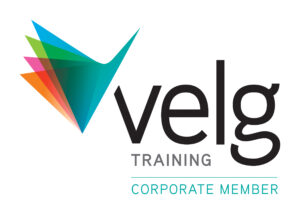What is a dogging and rigging course designed to provide?
If you’ve found your way here, it’s likely you are considering a potential role that involves dogging and rigging, and want to know what is required to take the next steps. In order to work as a dogger or rigger, you will need to undergo the relevant training.
One of the primary goals of any course is to ensure you are equipped with the correct techniques for the specific equipment you’ll work with. Additionally, employers want to reduce safety risks to yourself and others on site and help you get the most from your job.
A dogging or rigging qualification provides opportunities for a career in rigging and dogging in the building and construction industry. Once you’ve completed your dogging and rigging course, you will have the fundamental knowledge and skills needed to perform your role safely and effectively with confidence.
Both dogging and rigging have complementary responsibilities and procedures, however, each occupation has independent training activities, courses and licences. Put simply, a rigger is also a dogger, because riggers must have training or experience in dogging too.
What is the difference between a dogging and rigging ticket?
Dogging:
The role of a dogger is to direct the movement of heavy loads using load-bearing gear such as cranes. It’s their responsibility to select and maintain the lifting gear and equipment.
“Dogmen” also guide crane operators using radios and hand signals when loads are out of sight of the operator. They ensure the loads move safely in the right direction.
In both New South Wales and Queensland, you can obtain your dogging licence by successfully completing your course and receiving a Statement of Attainment, completing the HRW Licence Assessment (NAI) and applying for your HRW Licence through your states WorkSafe / SafeWork authority.
Dogging qualification is needed if you want to advance to a rigging position.
Rigging:
The role of a rigger is to manage and move large equipment, materials and loads. They also secure ropes and cables on loads to facilitate safe movement. Due to the high risk/hazardous nature of the industry, workers must complete a rigging course.
You will learn the appropriate working practices, safety precautions and skills that are required in the role. In all states and territories, the requirements to be a rigger include holding a basic, intermediate or advanced rigging ticket from WorkSafe/SafeWork.
You can only apply for this licence with your state or territory WHS / OHS Department after you have successfully
- Completed the correct course in rigging with an RTO
- Awarded a Statement of Attainment relevant to the Rigging Licence
- Successfully pass the HRW Licence Assessment (NAI)
- Hold a valid HRW Licence for Dogging, and the lower level rigging licence if applying for a higher level rigging licence
- Hold a valid general construction induction card (white card)
For both dogging and rigging you must be at least 18 years old, have a residential address in the same state and 100 points of ID for a high-risk licence.
Types of Dogging and Rigging Courses in Brisbane & Sydney
As mentioned above, all riggers start out as doggers, since they need training or experience in dogging to become riggers. If your goal is to become a rigger, you must start with a dogging course to qualify for a rigging licence.
There are various dogging and rigging courses available in Brisbane and Sydney. Your choice will depend on your experience level and background.
They include:
Dogging Ticket (DG)
A Dogging Ticket is a high-risk work licence needed so you can direct the crane operator when slinging loads around a construction site.
Slinging loads safely requires workers to understand the appropriate method and the suitability of the lifting gear. This is where a dogging course is required to help equip you with the skills required to determine the nature of loads (and the basics of moving them safely).
A Dogging Licence can be obtained via a course and is a nationally recognised qualification.
A DG is needed for safety and legally required for any dogging work. It will also help enhance your future job opportunities and earning potential in the dogging industry. It covers all areas required to attain a High-Risk Work Licence for dogging procedures.
With this licence, you can direct cranes during load movement. You can also select and inspect lifting gear such as lifting beams, chains, shackles, and synthetic slings within Australia.
Before performing any dogging duties on site, you must have a High-Risk Work Licence.
How much does a dogging course cost?
A dogging course costs around AUD$1400 (at the time of writing).
How long does a dogging (DG) licence course take?
A dogging qualification can be completed in a week with Kallibr Training (RTO 32365), on site at our Brisbane & Sydney training centres.
On the successful completion of a dogging (DG) course, you will receive:
A nationally recognised qualification CPCCLDG3001 Licence To Perform Dogging (DG). You will then be able to undertake your HRW Licence assessment.
Basic Rigging Licence (RB)
A basic/introductory rigging course will equip workers with the knowledge required to achieve a basic rigging licence. This includes rigging fundamentals and the skills to fulfil basic rigging tasks, such as those involving:
– Hoists
– Steel erections
– Moving plant and equipment
– Setting up safety nets and static lines
– Placing precast concrete members
– Mast climbing work platforms
– Crane-loading platforms
The course will also cover how to plan tasks, choose and examine the equipment, erect plants and structures and dismantle them.
In addition to learning about the practical tasks you’ll undertake in a basic rigging role, you will also gain required knowledge in safety and communication (such as hand signal usage).
A basic rigging course provides the perfect overview of this job and what it entails. Once successfully completed, you can use your Statement of Attainment and NoA / CAS to apply for a licence.
To take this course, you must have a valid high-risk work licence for dogging (class DG) or the unit CPCCLDG3001 Licence to perform dogging.
After completing and achieving the first level of rigging licences, you will have the opportunity to later undertake additional training to move on to intermediate or advanced rigging.
Intermediate Rigging Licence (RI)
If you have already completed basic rigging training and want to take the next step in your rigging career, you can move on to an intermediate rigging course.
The intermediate course builds on the units and skills covered in the introductory training. Think of this as a step up that will equip you to take on additional responsibilities and tasks in a rigging capacity.
Besides basic rigging skills, this course teaches the rigging procedures of all types of excavators, cranes, hoists, dredges and conveyors.
The course will cover rigging skills such as how to safely:
– Rig dual lifts
– Tilt slabs
– Complete rigging tasks involved in demolishing plants or structures
– Work with cranes, conveyors, dredges and excavators
– Specialty hoists
Once successfully completed, this course will qualify you to become a licenced rigger in the industry and you will be awarded a Statement of Attainment and along with the notification of successful completion of the NAI, you can apply for your new rigging licence.
A basic or intermediate rigging licence can last a lifetime as long as you remember to renew it every 5 years.
How much does a rigging course cost?
At the time of writing, a basic rigging licence course costs a little over AUD$1500, and an intermediate rigging course costs from $1697
How long does a rigging ticket course take?
Both the basic and intermediate rigging courses each take 5 days to complete.
On the successful completion of a rigging course, you will receive:
- CPCCLRG3001 Licence to perform rigging basic level for the RB course,
- CPCCLRG3002 Licence to perform rigging intermediate level for the RI course.
Who teaches dogging and rigging in Brisbane & Sydney
At Kallibr Training, we offer training and assessment for high-risk work licences in Brisbane & Sydney, as well as short courses and qualifications for many other skills. You will be taught by our expert accredited trainers at well-equipped facilities to ensure you receive the most realistic experience possible.
We want you to have peace of mind that you will learn all the necessary requirements to get the qualification you need so you can advance your career in your area of choice.
Our trainers have helped numerous students gain the nationally recognised experience and knowledge they need to achieve the course outcomes, receive their Statement of Attainment and become licenced.
Does Kallibr Training offer an Advanced Rigging Licence?
Yes – for Sydney and Brisbane we also offer an advanced rigging course to deepen your knowledge in rigging and prepare you for the highest level of this role.
The course is available to anyone who has already completed the required training for intermediate rigging (individuals must hold CPCCLRG3002 Licence to perform rigging intermediate level or High-Risk Work RI licence).
It is the ideal and required next step for anyone wanting to advance further in this profession with the most advanced rigging qualification available. The advanced rigging course includes training for setting up and dismantling very complex structures and equipment.
You will also be taught how to rig gin poles and shear legs, flying foxes, cableways, guyed derricks and structures and suspended scaffolds and fabricated hung scaffolds for licensing purposes.
The qualification you’ll receive upon successful completion of the course is nationally recognised.
The course is run by experts in this industry area so you can rest assured you are receiving the most up to date information to equip you with the skills needed in advance rigging roles.
Ready to begin your dogging and rigging qualification?
In the construction industry, dogging and rigging qualifications are a legal requirement. There are a few reasons for this, one of the major ones being–workplace safety and the welfare of yourself and other workers.
This is even more essential when dealing with high-risk and hazardous equipment in a site environment. Completing your dogging or rigging qualification helps to reduce the risk and occurrence of accidents and property damage on work sites.
Additionally, these are specialist areas that someone can’t just walk off the street and do safely and effectively without the relevant prior knowledge or experience.
A dogging/rigging qualification will provide you with everything you need to know to either get your career started in this area, or to advance further in your career, and enhance your opportunities and earning potential.
It’s always best to choose a course provider that is experienced, flexible and knowledgeable so you can achieve the best outcomes possible.
Get in touch today to find out about our rigging and dogging courses in Brisbane and Sydney.




